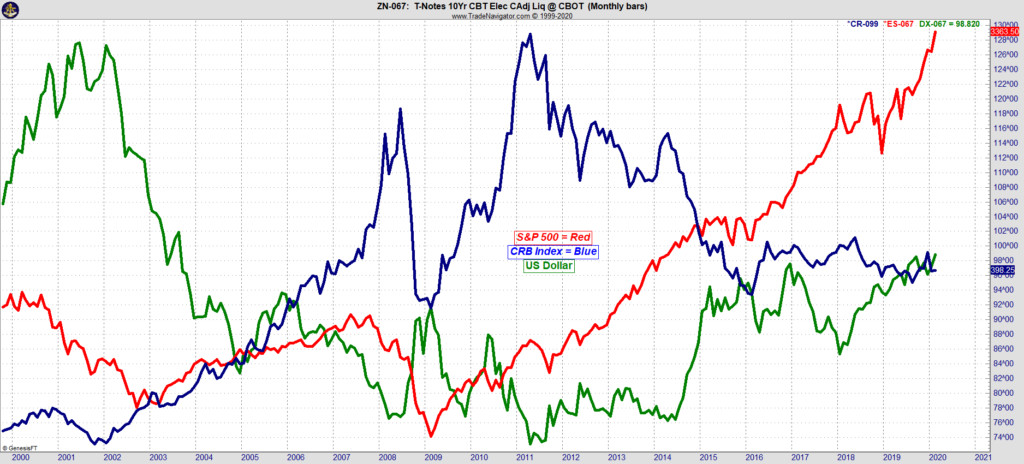At one time or another, we have all been asked that old philosophical question, “Which came first, the chicken or the egg?” By no means do I intend to provide the definitive answer to this, I instead want to rephrase the question to; Which came first, the Dollar or the Dow? In this case, I am referring to the U.S. Dollar and Equity markets and wonder which is driving which. Do our equity markets hold so much promise that money from around the globe is rushing in to buy Dollars so they can invest in the Dow, the S&P 500 or NASDAQ or is the Dollar being viewed as the only non-gold safe haven that people want to own because of all the uncertainty with viruses and trade wars, and once purchased, view equities as the single reasonable investment in a near zero-interest-rate environment. While I am not prepared to offer a definitive answer to that question either, I do believe the two are feeding off of each other with buying, and as long as that remains the case, commodities will be receiving the short end of the stick, so to speak.
We have arrived on report day and as I have said previously, it should be a non-event. Not only is the February report overshadowed by the upcoming Agricultural Outlook Forum (20th/21st) where baseline information is provided by the USDA, this year we already know we are dealing with incomplete data. The USDA is making no revision for Phase One just yet and we do not even have corn harvest complete in a few states (ND 50% complete). Regardless, it will provide the trade something to focus on momentarily as there certainly is not much else to look at right now. Once again, here are trade estimates; 2019/20 domestic ending stocks for corn are expected to total 1.864 billion bushels, which would be down a mere 28 million bushels from last month. Beans are expected to drop 32 million to 443 million and wheat 11 million to 954 million. Had China not experienced the coronavirus outbreak, I would not have been surprised to have seen numbers reduced just a bit more. Very little change is anticipated for the South American crops either. The average estimate for Brazilian beans is 123.65 MMT versus 123 and corn, 100.85 MMT instead of 101. For Argentina, the bean estimate is 53.15 MMT, up from 53.0 and corn at 49.97 instead of 50.0. World ending stocks for corn are expected to slip down to 297.19 MMT from 297.18, and wheat to be lowered to 287.44 compared with 288.08, but beans are expected to increase from 96.67 MMT to 96.90.
Rain has slowed harvest activity in Brazil a touch and as of last weekend, bean harvest was estimated to be 15.7% complete. This is just behind the 5-year average of 16.2%. Overall, yields have been quite solid and this week, Dr. Cordonnier raised his estimate 1 MMT to 124.0. Conab has released updated estimates this morning and also bumped figures a bit higher. They now estimate total bean production to tally 123.25 MMT, up just over 1 MMT from last month and increased corn nearly 1.8 MMT to 100.49 MMT. In Argentina, the weather has been stable, and the bean crop is now rated 70% good/excellent and corn 59% good/excellent.
